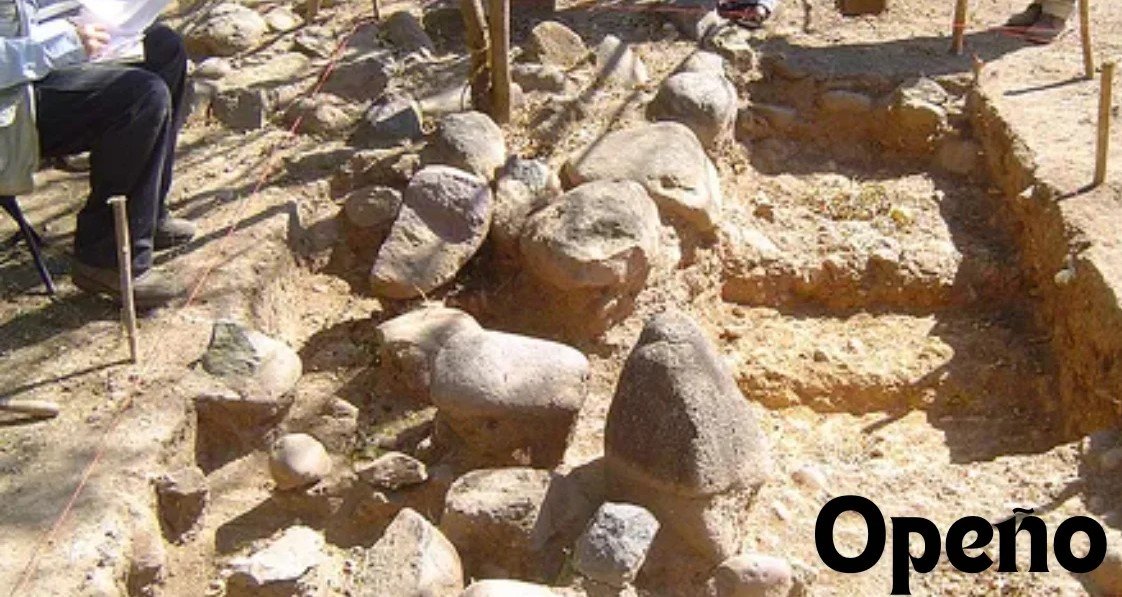The term “opeño” may not immediately ring a bell for many, but it holds significance in various contexts that merit exploration. Understanding “opeño” involves delving into its origins, its applications in different fields, and its broader implications. This comprehensive overview will examine the uses and impacts of “opeño” across various domains, uncovering the layers of meaning and importance attributed to this intriguing term.
What is Opeño?
Before exploring its applications, it is essential to define what “opeño” actually means. The term “opeño” refers to an archaeological site in Western Mexico, specifically in the state of Michoacán. This site is crucial for understanding the Pre-Columbian history of Mesoamerica, offering insights into ancient civilizations and their cultural practices.
The significance of “opeño” extends beyond its geographical location. It encapsulates a wealth of archaeological findings that provide a window into the lives of early Mesoamerican societies. These findings include pottery, figurines, and burial sites, each contributing to our understanding of the region’s ancient cultures. Thus, It is not just a place but a gateway to the past.
The Historical Importance of Opeño
The “opeño” site dates back to the Late Formative period, around 1200-400 BCE. This timeline places it among the earliest known settlements in Western Mexico, making it a key site for archaeologists and historians. The discoveries at it have helped to fill gaps in our knowledge about the development of complex societies in Mesoamerica.
One of the most significant aspects of “opeño” is its burial complexes. These tombs are unique, featuring intricate designs and rich offerings, indicating a highly developed and stratified society. The presence of such elaborate burial sites suggests that it was a center of cultural and political activity. Therefore, the study of it offers valuable insights into the social and political dynamics of ancient Mesoamerican civilizations.
Additionally, the artifacts found at it provide crucial information about the technological advancements of the time. From pottery techniques to metallurgical practices, the findings at “opeño” reveal a society that was both innovative and skilled. This technological prowess is a testament to the ingenuity of the ancient inhabitants of “opeño.”
The Archaeological Discoveries at Opeño
The archaeological site of it has yielded a treasure trove of artifacts that shed light on the daily lives and spiritual practices of its ancient inhabitants. Among the most notable discoveries are the ceramic figurines, which are remarkably detailed and varied in form. These figurines offer a glimpse into the artistic expressions and religious beliefs of the people of “opeño.”
Another significant find at it is the array of pottery shards and complete vessels. These items are not only artistically valuable but also provide information about the dietary habits and trade networks of the society. The presence of non-local materials in the pottery indicates that it was part of a broader trade network, linking it to other regions of Mesoamerica.
The burial sites at it are perhaps the most revealing aspect of the archaeological findings. The tombs are elaborate, with multiple chambers and rich offerings, suggesting a society with distinct social hierarchies. The presence of jade, shell, and other luxury items in the tombs indicates that it was a center of wealth and power. These findings make it a critical site for understanding the complexities of ancient Mesoamerican societies.
Opeño and Its Cultural Significance
It is not just an archaeological site; it is a cultural landmark that offers insights into the spiritual and social lives of ancient Mesoamerican people. The artifacts and burial sites found at it’s point to a society that placed great importance on religious and ceremonial practices. The detailed figurines and elaborate tombs suggest a rich tapestry of myths, deities, and rituals that were integral to the community.
The cultural significance of it is further highlighted by the discovery of musical instruments at the site. These instruments, made from clay and other materials, indicate that music played a vital role in the cultural and religious life of “opeño.” The presence of such artifacts suggests that the people of “opeño” had a highly developed sense of aesthetics and spirituality.
In addition to its religious and artistic significance, It also holds importance as a center of learning and knowledge. The complex burial sites and advanced pottery techniques indicate a society that valued education and the transmission of knowledge. Thus, It serves as a testament to the intellectual and cultural achievements of ancient Mesoamerican civilizations.
The Influence of Opeño on Modern Archaeology
The discoveries at “opeño” have had a profound impact on the field of archaeology, providing new methodologies and perspectives for studying ancient societies. The unique burial sites and artifacts found at it have challenged existing theories about the development of complex societies in Mesoamerica. These findings have prompted archaeologists to reconsider the social and political dynamics of the region.
One of the key contributions of it to modern archaeology is its evidence of early urbanization. The elaborate tombs and rich offerings suggest a society with a high degree of social stratification and urban development. This challenges the notion that urbanization in Mesoamerica began exclusively in central Mexico, highlighting the importance of peripheral regions like “opeño.”
The technological advancements discovered at it have also influenced modern archaeological practices. The intricate pottery and metallurgical techniques provide valuable information about the technological capabilities of ancient societies. This has led to a greater appreciation of the skill and innovation of the people of “opeño,” influencing the way archaeologists study and interpret ancient technologies.
Opeño in Contemporary Academic Research
It continues to be a focal point for academic research, attracting scholars from various disciplines who seek to uncover its many mysteries. The site offers a wealth of data for studies in archaeology, anthropology, and history, making it a multidisciplinary research hub. Researchers are particularly interested in the social and political structures of “opeño,” as well as its cultural and religious practices.
Recent studies at it have focused on the environmental context of the site. By analyzing pollen samples and other ecological data, researchers are gaining insights into the agricultural practices and environmental challenges faced by the ancient inhabitants of “opeño.” This research is crucial for understanding how the people of it adapted to their environment and sustained their society.
The findings at “opeño” also have implications for the study of long-distance trade networks in ancient Mesoamerica. The presence of non-local materials in the artifacts suggests that it was part of a broader trade system. This has led scholars to investigate the economic and political relationships between “opeño” and other regions, shedding light on the interconnectedness of ancient Mesoamerican societies.
The Broader Implications of Opeño
The significance of it extends beyond its historical and archaeological value. The site offers important lessons for contemporary society, particularly in the areas of cultural preservation and environmental sustainability. The advanced technologies and adaptive strategies of the people of it provide valuable insights for addressing modern challenges.
One of the broader implications of it is its contribution to our understanding of cultural diversity and resilience. The rich cultural artifacts and complex social structures of it demonstrate the diversity and adaptability of ancient Mesoamerican societies. This serves as a reminder of the importance of preserving cultural heritage and learning from the past.
The environmental research conducted at it also has contemporary relevance. By studying the agricultural practices and ecological challenges faced by the ancient inhabitants, we can gain insights into sustainable farming practices and environmental management. The lessons learned from it can inform modern efforts to address climate change and promote sustainable development.
Opeño and Public Engagement
The story of “opeño” is not just for scholars and researchers; it is a tale that can captivate the public imagination and foster a deeper appreciation for cultural heritage. Efforts to engage the public with the findings at it have included museum exhibits, documentaries, and educational programs. These initiatives aim to make the history and significance of it accessible to a wider audience.
Museums play a crucial role in preserving and presenting the artifacts from “opeño.” Exhibits showcasing the pottery, figurines, and burial sites offer visitors a tangible connection to the past. These displays are accompanied by interpretive materials that provide context and insights into the significance of “opeño,” making history come alive for visitors.
Documentaries and educational programs also help to disseminate knowledge about it to a broader audience. By featuring the site in films and television shows, filmmakers can bring the story of it to life, reaching people who might not otherwise be exposed to its history. Educational programs in schools and universities further ensure that the lessons of “opeño” are passed on to future generations.
The Future of Opeño Research
The research and exploration of “opeño” are far from complete. New technologies and methodologies continue to uncover new insights and challenge existing theories. The future of “opeño” research holds the promise of even more exciting discoveries and a deeper understanding of this remarkable site.
One of the areas of future research at it is the use of advanced imaging techniques. Technologies such as LiDAR and ground-penetrating radar can reveal hidden structures and artifacts that have not yet been uncovered. These tools allow archaeologists to explore the site without disturbing its delicate features, preserving it for future generations.
Another promising avenue of research is the study of the genetic material found at “opeño.” By analyzing ancient DNA from human remains and other organic materials, researchers can gain insights into the population dynamics and health of the ancient inhabitants. This research can reveal information about the origins, migrations, and interactions of the people of “opeño.”
Conclusion
“Opeño” is a site of immense historical, cultural, and archaeological significance. Its rich artifacts, complex burial sites, and advanced technologies offer a window into the lives of ancient Mesoamerican societies. The study of “opeño” provides valuable insights into social, political, and technological developments that have shaped human history.
For language enthusiasts, cultural explorers, and academic researchers alike, “opeño” offers a wealth of knowledge and inspiration. Its significance extends beyond the confines of academia, offering lessons for contemporary society and opportunities for public engagement. The continued exploration and preservation of “opeño” will ensure that its stories and lessons endure for generations to come.
If you are interested in learning more about “opeño” and exploring its many facets, consider engaging with the ongoing research and public initiatives. By supporting efforts to preserve and study “opeño,” you can contribute to the continued discovery and appreciation of this remarkable site.












